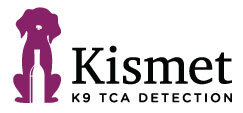
Making wine is an art. A craft. A science.
“This wine is corked”. A phrase I have heard on countless occasions over the years working in wine hospitality and retail. But what does that mean? For some it (mis)used as catch all for any fault in the wine, or even for a wine they just plain don’t like. Often, I’d take the bottle or glass from the guest, go in the back and give it a sniff (or maybe a taste if it’s a bottle). Sometimes it is, in fact “corked”. This means there is a presence of haloanisoles in the wine rendering it muted and flat at best, downright stinky and undrinkable at worst.
Haloanisoles are a family of volatile chemical compounds that can contaminate wines and cause musty or moldy aromas, think wet cardboard or mold. There are four main haloanisoles responsible for most wine contamination, but the 2 that wreak the most havoc for wine professionals and consumers are:
TCA: Trichloroanisole 2,4,6
TBA: Tribromoanisole 2,4,6
Commonly referred to as “cork taint”, as the contamination has historically been traced back to the cork closure. But what about screw capped wines being corked? Not unheard of, and here’s why.
Anisoles are organically present in the air, and if they link up to form TCA or TBA, they can settle on pretty much anything. Oak barrels, tanks, hoses, winery equipment. You could have a contaminated hose, which then contaminates all the wine run through it. Once bottled, that taint could spread upward to the cork. So maybe it wasn’t the cork’s fault. Don’t get me wrong, bad corks have oft been the culprit so we’re not letting them off the hook entirely, but cork technology has come a long way and they are no longer the primary vector.
A contaminated barrel or hose is a much bigger problem. You don’t just have a bad bottle, you have 300 bad bottles per barrel. Wineries have lost entire vintages. Another piece to this sad puzzle is detectability. People have different thresholds for picking up the odor. Add to that, the longer the wine is open and exposed to oxygen, the more pronounced the odor becomes. On more than one occasion, working a busy Saturday in a tasting room, I’d come across a clearly corked bottle, half (or more) poured. My first thought would, be how many people got a taste of this and think the wine just isn’t good? My second thought would along the lines of wondering who opened it, and why they didn’t notice the flaw. At that time, I didn’t realize there was the double whammy of perception level and time open. I performed staff training to try to prevent this, not knowing I could never completely fix the problem.
While cork taint can sneak past people (even those with exceptional noses), it can’t hide from our dogs. Luca and Bobby have been specifically trained to sniff out the haloanisoles. Dogs have 300 million olfactory receptors in their noses. To quote a PBS article https://www.pbs.org/wgbh/nova/article/dogs-sense-of-smell/ Dogs' sense of smell overpowers our own by orders of magnitude—it's 10,000 to 100,000 times as acute, scientists say. "Let's suppose they're just 10,000 times better," says James Walker, former director of the Sensory Research Institute at Florida State University, who, with several colleagues, came up with that jaw-dropping estimate during a rigorously designed, oft-cited study. "If you make the analogy to vision, what you and I can see at a third of a mile, a dog could see more than 3,000 miles away and still see as well."
So while you may have an exceptional nose by human standards, it simply cannot compete with the abilities of our dogs to sniff out TCA.

Our services.
Wineries
• Clean Facility Check
• Pre-racking
• Pre-bottling
• Spot Checks
*A La Carte & Yearly Packages Available
Cooperages
• Clean Barrel Certification
